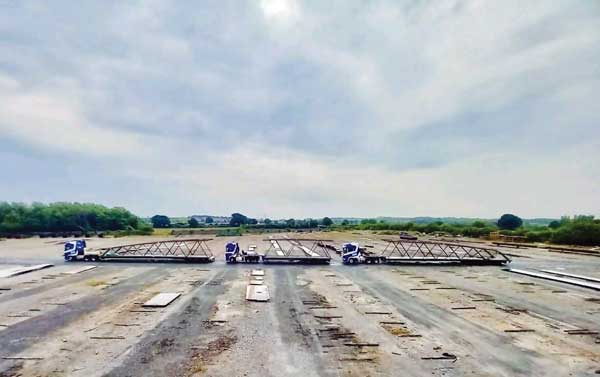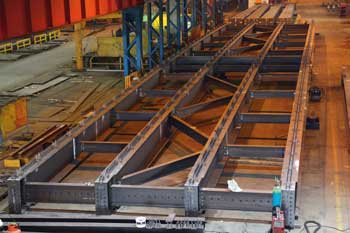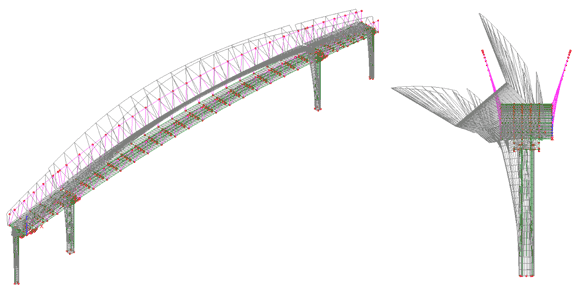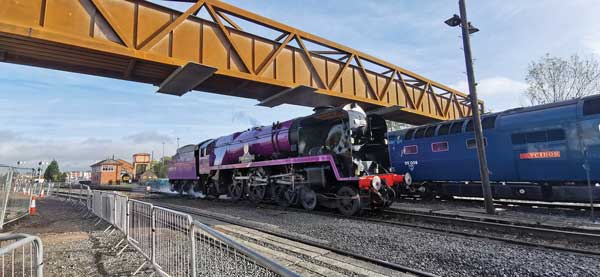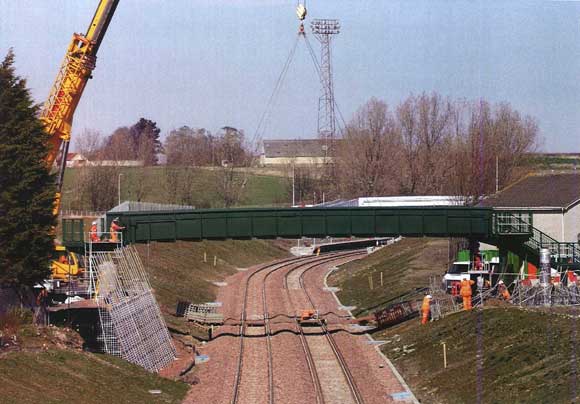Projects and Features
Steel connection
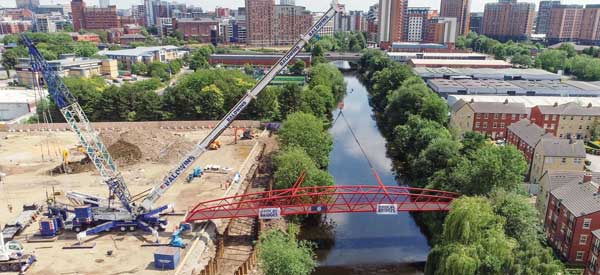
A 57m-long Warren Truss pedestrian bridge has been installed to provide a link between two parts of a large residential-led development in Leeds city centre.
FACT FILE
Kirkstall Road pedestrian bridge, Leeds
Main client: Latimer by Clarion Housing Group
Main contractor: Beaver Bridges
Structural engineer: Beaver Bridges
Steelwork contractor: Beaver Bridges
Steel tonnage: 60t
Comprising more than 1,700 homes, a new district on the banks of the River Aire is taking shape in Leeds. Being delivered by Latimer, the development arm of the Clarion Housing Group, the scheme will include 11 buildings of eight to 17-storeys, townhouses, accommodation for the city’s burgeoning student population and more than 4,000m² of commercial space.
Commenting on the development, Richard Cook, Group Development Director at Latimer says: “We are confident that this development will be a game-changer for the Kirkstall Road corridor and Leeds as a whole, providing a high-quality mixed use, sustainable community that will attract residents, businesses and visitors. Even more encouraging is the activity we are starting to see in the surrounding areas.”
Sustainability is at the heart of the scheme, as the homes will feature photovoltaic solar panels and will not use fossil fuels. There will be over 1,100 secure cycle parking spaces as well as electric car charging points for residents. New pedestrian walkways and cycle paths will improve local connections – reducing the site’s carbon footprint and helping to keep cars off the nearby streets.
Nearly half of the 13-acre site’s footprint will be green space, while landscaped areas, including 250 new trees, will be designed to encourage social interaction and communal ‘grow-your-own’ planting zones.
The scheme will also deliver 2.2 hectares of green infrastructure including a new square, a riverside park and the reinstatement of a bridge that will create a new north-south route, linking both banks of the River Aire.
Forming an important part of the overall development, the new bridge is a 57m-long Warren Truss, designed, fabricated, supplied and installed by Beaver Bridges. Working on a full turnkey build and design contract, the company also installed new abutments and completed the necessary piling.
“The only convenient position for the new bridge was on the site of the old structure, so our first task was the removal of the existing Bailey bridge and the old and redundant services it carried,” explains Beaver Bridges Head of Sales Clive Evans.
Reinforced concrete abutments were then installed on both sides of the river. These are founded on a series of 300mm-diameter CFA piles, which are up to 11m-deep.
Once the preparatory works had been completed, the new bridge was installed. Manufactured at the company’s Wigan facility, the Warren Truss bridge was fabricated in three sections, which allowed it to be transported to site, where it was spliced together via bolted connections and lifted into place as one complete structure.
Measuring 3.5m-wide, the bridge comprised two 21m-long pieces and one 15m-long central section. Both sides of the Warren Truss have top and bottom chords formed with 250mm x 250mm x 16mm box sections, which are linked together by 200mm x 100mm x 12.5mm diagonal members.
Between the two trusses, the 10mm-thick deck of the bridge is supported by a series of 150mm x 150mm x 6.3mm cross members.
To make sure the three bridge sections fitted together correctly, a trial erection was undertaken at the fabrication yard, before the steelwork was painted.
Using the services of coatings specialist Jack Tighe, the bridge steelwork was painted pillar box red with a Fluoropolymer coating. This has a 60-year guarantee, minimising any future maintenance and thereby reducing the need for work at height and over the river.
As the site is quite confined and surrounded by busy roads, the installation of the bridge was brought about by a co-ordinated three-day operation in conjunction with West Yorkshire Highways.
After the three parts were spliced together, a three-hour lifting operation, using a 1,000t-capacity mobile crane, installed the 60t bridge safely into position.
Beaver Bridges Chief Executive Henry Beaver, says: “With the ongoing roadworks in the centre of Leeds, it was a challenging location to bring the bridge sections into place for final splicing, but our internal logistics team did an excellent job in managing this on behalf of the client.”
The bridge’s installation is said to be a milestone for the overall development, creating better access to the wider area.
Work on the new development is expected to create around 270 site jobs during each year of the build programme, as well as additional opportunities for young people. Over 100 apprenticeships and work placements are likely to be available throughout construction.
Work on the Kirkstall Road site, which began in 2002, will deliver an estimated £300M in social value to the city economy. The overall scheme is expected to complete in 2029.








